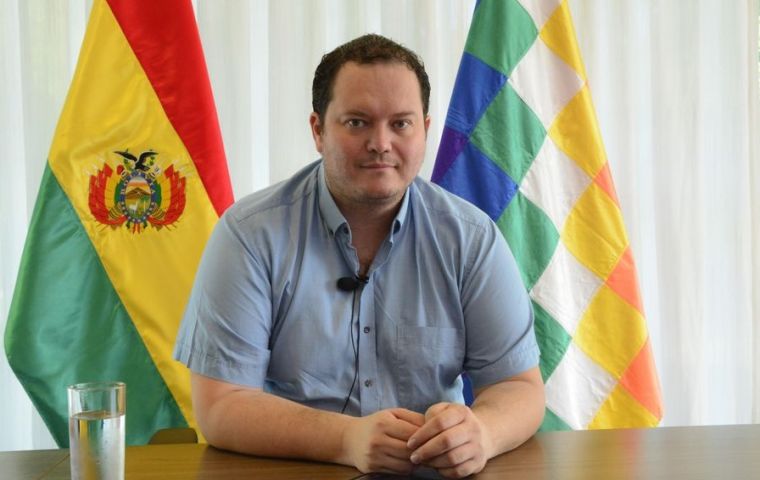MercoPress. South Atlantic News Agency
Argentina starts pumping gas to Brazil through Bolivia
 Dorgathen said the gas no longer exported to Argentina will go to Brazil, where prices are “more competitive” and in greater demand
Dorgathen said the gas no longer exported to Argentina will go to Brazil, where prices are “more competitive” and in greater demand Argentina began exporting natural gas to Brazil for the first time through the infrastructure of Yacimientos Petrolíferos Fiscales Bolivianos (YPFB), it was reported Tuesday.
TotalEnergies' gas sales were pumped from the Vaca Muerta field in the province of Neuquén to Matrix Energy through Argentina’s TGN and TGS pipelines to Salta, then via Bolivia’s YPFB network, including the Madrejones pipeline, to Brazil, following a three-way agreement signed in late 2024.
The Brazil-Bolivia Gas Pipeline (Gasbol), with a capacity of 30 million cubic meters per day, currently operates at 10 million but plans to scale up to 30 million over five years to meet Brazil’s industrial demand, Bolivian authorities also explained as the landlocked country shifted from exporting to leasing its pipelines, generating income and reinforcing its role as a key energy link in the Southern Cone.
The understanding also helped Argentina reactivate its energy sector in a move that heralds future hydrocarbon investments. Initial shipments are set at 2 million cubic meters daily.
In a related development, YPFB President Armin Dorgathen announced that fuel supply (gasoline and diesel) in Bolivia’s main cities—Santa Cruz, La Paz, and Cochabamba—has stabilized, reducing queues at pumps. YPFB currently distributes over 7.7 million liters of diesel and 8 million liters of gasoline daily, with more shipments arriving at the Chilean port of Arica.
Dorgathen denied rumors of fleeing the country or overcharging for fuel imports, emphasizing that prices align with international benchmarks and dismissing claims otherwise. He also defended Bolivia’s fuel subsidy and announced a forthcoming forum to clarify regional fuel pricing.
He also pointed out that the gas no longer exported to Argentina will go to Brazil, where prices are “more competitive” and in greater demand.
In Bolivia's axis, made up of the cities of Santa Cruz de la Sierra, La Paz, and Cochabamba, fuel supply has been normalized. “In Santa Cruz and La Paz, the queues to fill up gasoline have practically disappeared, which shows that we are managing to stabilize the supply,” Dorgathen mentioned. “We have gone from having 100 vehicles in line to only 30,” he said.
“Two additional ships are arriving in Arica, and we already have five ready to unload at the port,” he further highlighted. “This weekend, I read that I had fled to Paraguay, Panama, or Russia. That is absolutely false. We continue working in Bolivia,” where “we want to provide clear data on imports, freight and regional markets,” with details regarding “what a trader is, how it works and who the key players in this market are.”




Top Comments
Disclaimer & comment rulesCommenting for this story is now closed.
If you have a Facebook account, become a fan and comment on our Facebook Page!